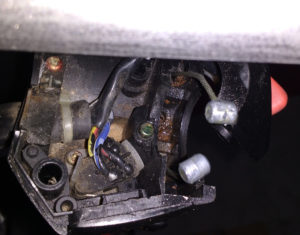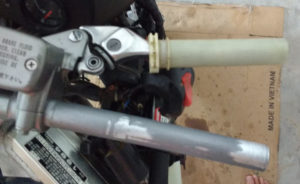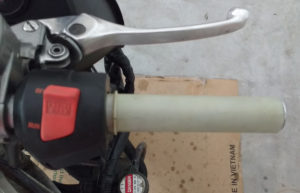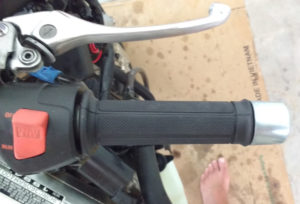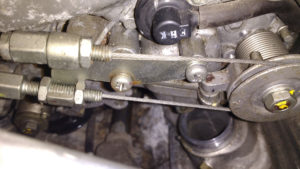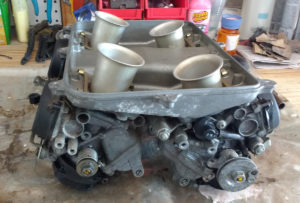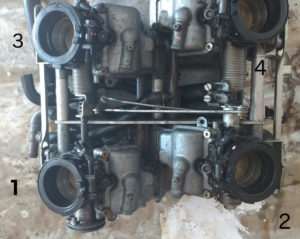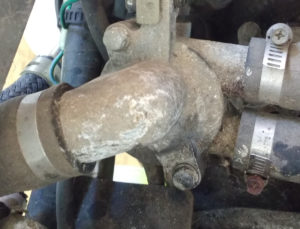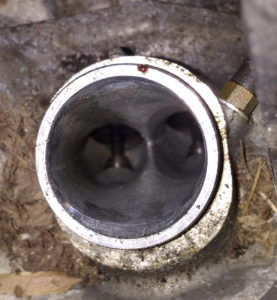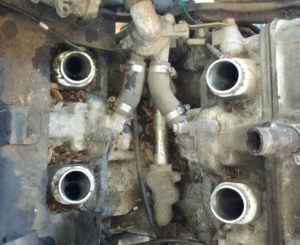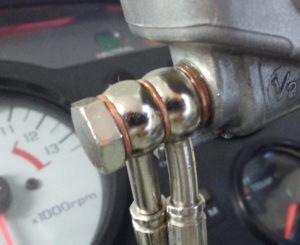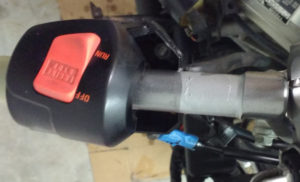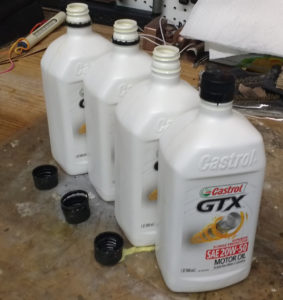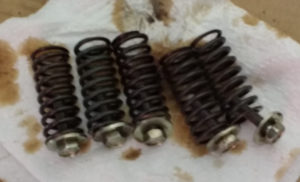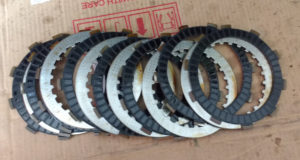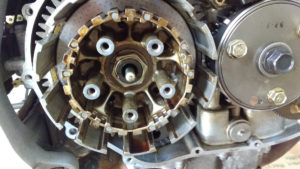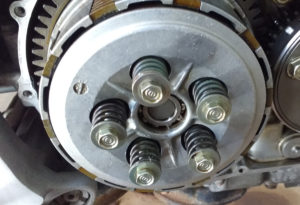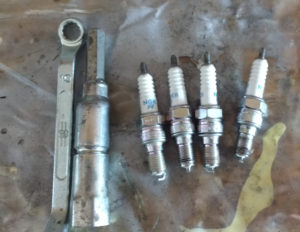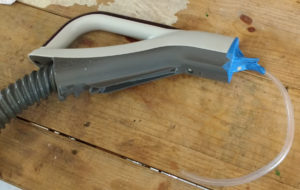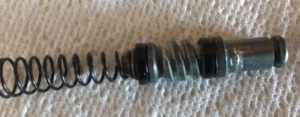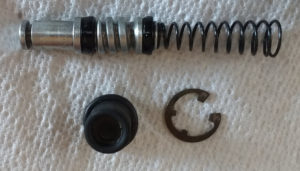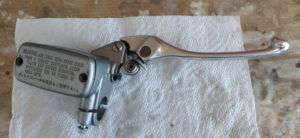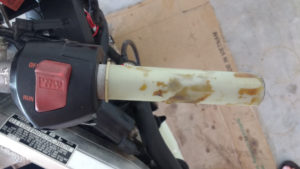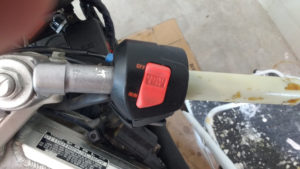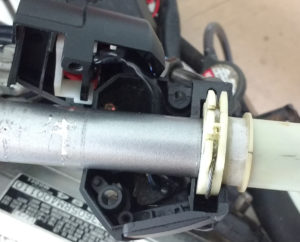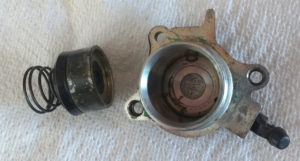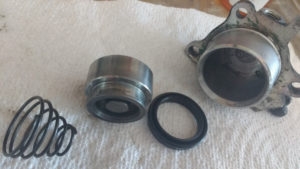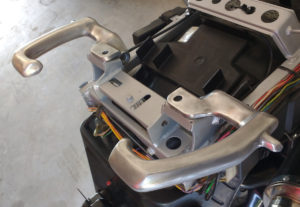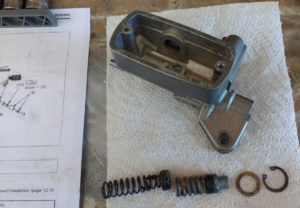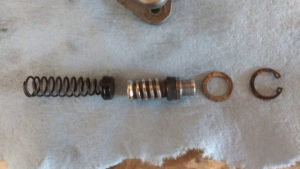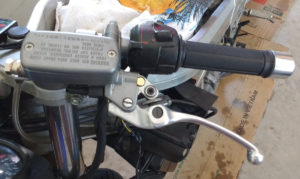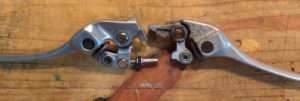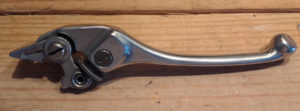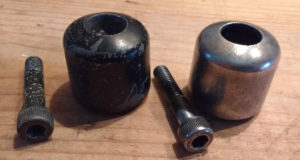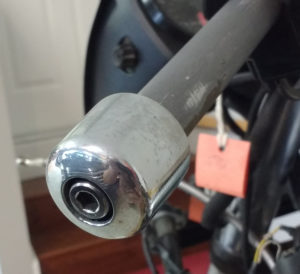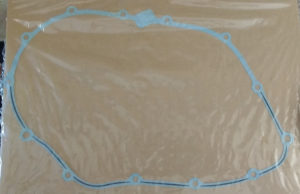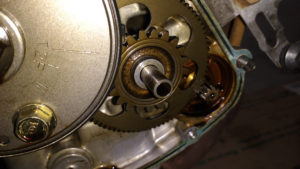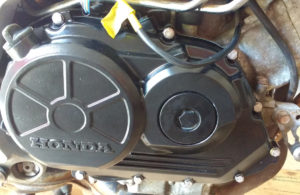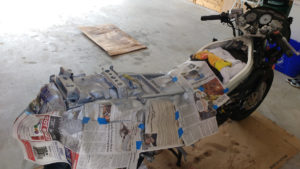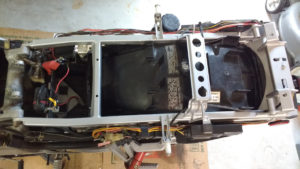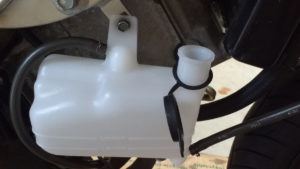Uploaded updated checklist [V8].
Progress today
Removed speedometer sending unit to access clutch slave cylinder banjo bolt. Cleaned the inner plastic rotating head and the opening in the cover plate.
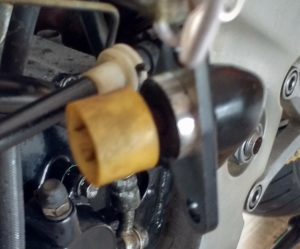
Disconnected both ends (banjo bolts), drained the little remaining fluid, and removed the clutch hose. Removed the clutch slave cylinder.
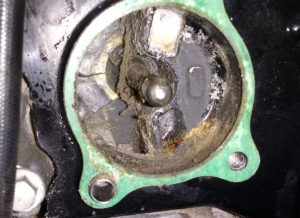 clutch slave cylinder hole, before
clutch slave cylinder hole, before
Scrubbed and polished the slave end of the clutch lifter rod behind the slave cylinder and cleaned out the cavity around it. The rod was crusty, but moves smoothly in and out of its bore.
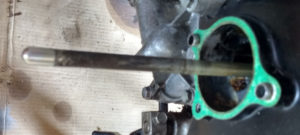 before
before
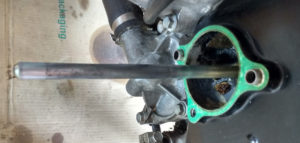 after
after
Cleaned out the slave cylinder with particular attention to the area inside the bore next to the piston. Without hydraulic pressure, I could not push out the piston, so did not attempt disassembly. Both the rubber oil and piston seals seemed sound, flexible, and undamaged from what I could see and feel.
 before
before
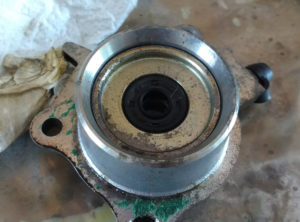 after
after
Cleaned out old grease from within the oil seal, applied fresh, and refitted the slave cylinder to the engine. Will remove and rebuild the slave cylinder later if shown to have failed/stuck.
Reinstalled speedo sender and installed the new stainless braided clutch line at the slave cylinder end. Torqued banjo bolt to 15 ft/lbs. Ran the master end of the line to near the handlebar for later connection.
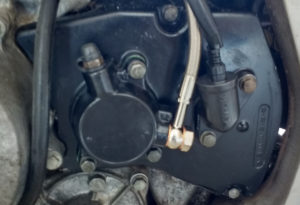
Removed the left handlebar end-weight, grip, switch assembly, and choke lever, disconnected the choke cable, and pulled of the master cylinder/lever assembly.
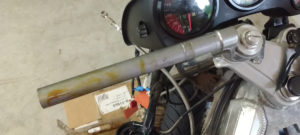
Thoroughly cleaned and smoothed the bar to remove old adhesive and some rough metal.
Cleaned out and scrubbed the left switch assembly which was full of crud and somewhat corroded. Used a toothbrush with brake cleaner, then contact cleaner, lastly WD40. This smoothed the switches’ action considerably. Also cleaned and slightly greased the choke lever.
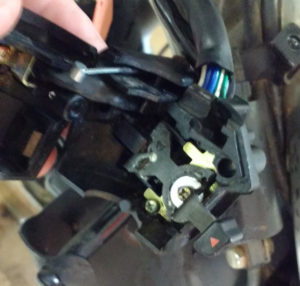
Flowed WD40 down the choke cable. Pulling on the lower end showed the cable moving freely in its case. Motion still seems to be stiff at the carb end – will check, clean, and lube there after carb removal.
Reassembled the switch and choke lever assembly, polished the mounting screws, and reinstalled on the left handlebar.
Next:
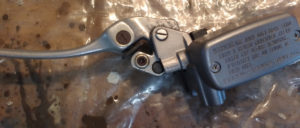
Disassemble and evaluate the guts of the clutch master cylinder. Hopefully it just needs cleaning, but may need rebuild with new seals. Also polish up the clutch lever and its adjuster, and lube the pivot.

